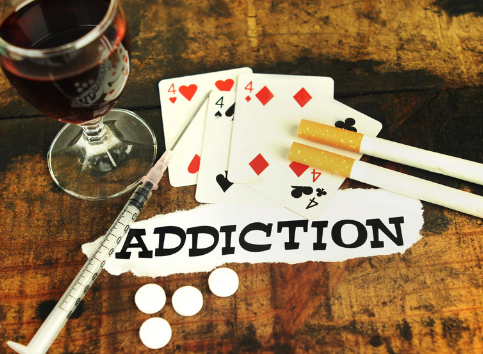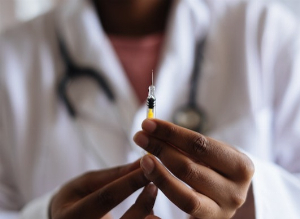What is addiction?
Published Apr 20, 2021 • By Candice Salomé
According to the National Survey on Drug Use and Health (NSDUH), 19.7 million American adults (aged 12 and older) struggled with a substance use disorder in 2017. Addiction, if left uncontrolled, can take a serious toll on a person's life, keeping them from engaging in daily tasks and behaviors and contributing to their risk of chronic and/or terminal illness.
But what is addiction exactly? How does it work? Are all individuals alike when it comes to addiction? How is addiction diagnosed and treated?
We tell you everything in our article!

What is addiction?
Addiction is considered as a disorder based on the repeated and uncontrolled consumption of a product (alcohol, tobacco, drugs, etc.) or on the abnormally excessive practice of a behavior (gambling, social media, sports, etc.).
Addiction can lead to:
- A loss of control over consumption or practice,
- A change in emotional balance,
- Medical problems,
- Disruption of personal, professional and social life.
Among non-substance addictions, only pathological gambling or gaming are clinically recognized as behavioral addictions in international diagnostic classifications.
The National Institute on Drug Abuse (NIDA) in the US gives the following definition:
“Addiction is a chronic, relapsing disorder characterized by compulsive drug seeking and use despite adverse consequences.”
How does addiction work?
Taking an addictive substance such as tobacco, alcohol, cocaine, etc. or engaging in excessive practice of an activity activates circuitry in the brain called the "reward system". This circuitry involves specific neurons, dopaminergic neurons, which are responsible for the production of a specific molecule: dopamine. When secreted by the brain, dopamine produces a feeling of pleasure.
Taking an addictive product such as tobacco, alcohol or cocaine activates a brain circuitry called the ‘reward system’. It involves dopaminergic neurons. These are responsible for producing a specific molecule called dopamine. When secreted by the brain, dopamine leads to a feeling of pleasure.
In a normal context, dopamine is secreted after a pleasant or positive event or activity and is highly useful for learning phases and the satisfaction of our vital needs, for example.
The use of certain substances or behaviors artificially increases the production of dopamine beyond the normal range. In order to achieve this pleasant sensation again, the body seeks to repeat the experience. This will create a "positive reinforcement" mechanism.
Some substances or behaviors artificially increase the dopamine production above the normal level. In order to achieve this pleasant sensation again, the body seeks to repeat the experience. This will create a "positive reinforcement" mechanism.
With time, the brain becomes less and less sensitive to addictive behaviors. The individual will therefore increase his or her intake of drugs or other substances or will increase their excessive practice of an activity as time goes by. This is called addiction.
Are all individuals equal when it comes to addiction?
Addiction is a disorder of the nervous system to which we are not all equally susceptible. It is a complex process that develops through an interaction between a substance and a vulnerable subject.
There are two main types of vulnerability. The first is intrinsic and includes biological, genetic, psychological or behavioral factors. The second is extrinsic and includes family culture, experiences and life events but also certain socio-economic factors. Finally, some individuals are more predisposed according to their age. An adolescent brain is not yet mature or fully developed, so it is more vulnerable to addictive behavior.
In addition, the brain of someone living with addiction often combines at least two brain chemistry-related factors:
An over-activated reward system
When the brain receives an "unexpected" reward following a given behavior, it memorizes the positive consequence of this behavior and encourages its renewal.
In so-called "normal" situations (when eating, during sexual activity, etc.), the release of dopamine and the pleasure it induces last only a few moments. In the case of mind-altering drugs, this feeling of pleasure lasts longer and its effect is much more intense. An addicted individual will therefore not be able to resist consuming the substance that has previously given pleasure when he or she comes into contact with it.
A deficit in synaptic plasticity
In certain individuals, the synapses'* ability to decrease their activity under the effect of certain stimuli may be impaired. This phenomenon would no longer allow the development of new memory traces (engrams) and would explain the behavioral shift towards compulsive and automated behaviors.
*A synapse is a small pocket of space between two brain cells (neurons) where they can pass chemical messages (neurotransmitters) to each other to communicate. It is a particularly important structure, where the neuronal signal can be strengthened (via an increase in neurotransmitter release or the number of postsynaptic receptors) or decreased (via an increase in the number of presynaptic receptors). This is called "synaptic plasticity". Among the neurotransmitters involved in addiction mechanisms, dopamine plays an important role.
- Definition from the French Federation for Brain Research.
How is addiction diagnosed?
To establish a diagnosis, healthcare professionals use two major classifications:
Diagnostic and Statistical Manual of Mental Disorders (DSM-5), created by the American Psychiatric Association
The 11 criteria found in this manual are as follows:
- Taking the substance in larger amounts and/or over a longer period than the individual intended.
- Persistent attempts or one or more unsuccessful efforts made to cut down or control substance use.
- A great deal of time spent in activities necessary to obtain the substance, use the substance, or recover from effects.
- Craving or strong desire or urge to use the substance.
- Recurrent substance use resulting in a failure to fulfil major role obligations at work, school, or home.
- Continued substance use despite having persistent or recurrent social or interpersonal problems caused or exacerbated by the effects of the substance.
- Important social, occupational or recreational activities given up or reduced because of substance use.
- Recurrent substance use in situations in which it is physically hazardous.
- Substance use is continued despite knowledge of having a persistent or recurrent physical or psychological problem that is likely to have been caused or exacerbated by the substance.
- Increased tolerance to the substance, requiring increased amounts of the substance to achieve the same effect.
- Experiencing withdrawal symptoms either when the substance is reduced or stopped.
If the individual presents 2 to 3 of these criteria: the addiction is considered mild.
If the individual presents 4 to 5 of these criteria: the addiction is considered moderate.
If the individual presents 6 or more of these criteria: the addiction is considered severe.
The International Statistical Classification of Diseases and Health Problems (ICD-10) created by the World Health Organization
The 6 criteria of addiction of the International Statistical Classification of Diseases by the World Health Organization (ICD-10) are the following:
- A strong desire or sense of compulsion to take the substance.
- Difficulties in controlling substance-taking behavior (onset, termination or levels of use).
- A physiological state of withdrawal when the substance use has been stopped or reduced.
- Evidence of tolerance, such that increased doses of the substance are required in order to achieve the effect formerly produced by lower doses.
- Progressive neglect of alternative pleasures or interests because of substance use, increased amount of time necessary to obtain or take the substance or recover from its effects.
- Persisting with substance use despite clear evidence of overtly harmful consequences.
To make such a diagnosis, at least 3 of the above criteria must have occurred at the same time, in the same year.
How is addiction treated?
Treatments differ depending on the addiction in question, whether it is related to a substance or a practice. Addiction is a multifactorial illness that combines physical and psychological disorders. Care for addiction must take all these components into account.
Therapy and psychological support should therefore be given priority. In the case of addiction to psychoactive drugs or tobacco, care can be supplemented by a replacement treatment to compensate for the lack of these substances.
Care can be provided:
- In a hospital: in dedicated departments combining specialized consultations and withdrawal programs,
- In city-hospital networks (networks of health professionals in charge of continuity of care)
- With a general practitioner
Was this article helpful to you?
Share your thoughts and questions with the community in the comments below!
Take care!
Sources:
- International Statistical Classification of Diseases and Related Health Problems (ICD) - 11, World Health Organization
- Drug Misuse and Addiction, NIH National Institute on Drug Abuse
- Comprendre les addictions, Inserm
- Qu’est-ce qu’une addiction ?, Mild & Ca
- Addictions, Ministère des solidarités et de la santé
- Les addictions, Fédération de la recherche sur le cerveau
- Tout savoir sur l’addiction, Fédération Recherche Médicale
Comments
You will also like

Alcohol Abuse: “My life has changed for the better in every possible way since becoming sober.”
May 9, 2023

 Facebook
Facebook Twitter
Twitter

